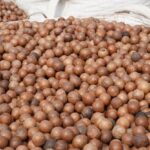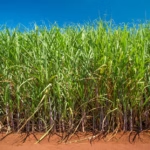When growing wheat in South Africa, there are several infections and diseases that farmers should watch out for. Here are some common ones:
- Rust Diseases:
Wheat rusts, including stem rust, leaf rust, and stripe rust, can cause significant yield losses. These fungal diseases spread through wind-borne spores and can quickly affect large areas. Monitoring and early detection are crucial for implementing appropriate control measures. - Fusarium Head Blight:
This fungal disease, caused by species of Fusarium, affects the wheat head during flowering. It can lead to reduced grain quality, including shriveled, lightweight, and moldy kernels. Proper crop rotation, seed treatment, and fungicide application can help manage this disease. - Septoria Leaf Spot:
Septoria tritici blotch is a foliar disease caused by the fungus Septoria tritici. It affects the leaves, causing small, dark lesions with characteristic yellow halos. This disease can reduce grain fill and yield. Crop rotation, resistant varieties, and timely fungicide application are effective management strategies. - Wheat Streak Mosaic Virus (WSMV):
This viral disease is transmitted by the wheat curl mite. It causes yellow streaking and mottling on the leaves, leading to stunted growth and yield reduction. Planting resistant varieties and controlling the vector mite population are crucial for managing WSMV. - Barley Yellow Dwarf Virus (BYDV):
BYDV is a viral disease transmitted by aphids. It affects wheat, causing stunted growth, yellowing, and yield reduction. Early sowing, resistant varieties, and aphid control measures can help minimize the impact of this disease. - Take-All Root Rot:
This soil-borne disease, caused by the fungus Gaeumannomyces graminis, affects the roots of wheat plants, leading to poor nutrient uptake and lodging. Crop rotation, use of resistant varieties, and maintaining good soil health are essential for managing take-all root rot. - Wheat Soilborne Mosaic Virus (WSBMV):
WSBMV is a viral disease that affects wheat roots and leaves. It causes yellowing and stunting, reducing both grain quality and yield. Crop rotation and resistant varieties are the primary methods to manage this disease.
To effectively manage these infections and diseases, farmers should employ integrated pest management practices, including proper seed selection, crop rotation, sanitation, timely scouting, and targeted fungicide or insecticide applications. Consulting with local agricultural extension services or crop specialists can provide region-specific advice and recommendations for disease management in wheat farming.









